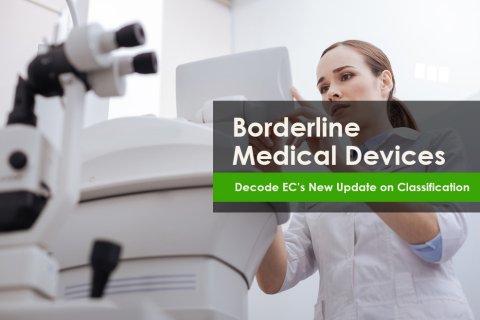In Europe, the demand for medical devices has increased by many folds. While medical device manufacturers are relying on the market demand, they must also make sure how their product is considered and classified in Europe. The fact that the device is accepted in other countries like USA, Canada or Japan does not always have to be conformed to the European Device Directive (EDD). Thus, it is important for manufacturers to first decode how the devices are classified in Europe.
To assist manufacturers, determine the class of their borderline medical devices, the European Commission (EC) recently released an updated manual further clarifying the classification of borderline products and medical devices. The 18th version of the manual, which also serves as a complement to MEDDEV 2.1/3 Rev. 3, extends case-by-case device determination. However, the recommendations mentioned in the document are not legally bound and national competent authorities can take their own decision.
EC’s new borderline device classifications and considerations include:
The following devices and their functions are considered under medical device purposes:
- Alum styptic pencils can be classified under Class III medical devices
- Tissue expanders used in the breast cab be classified under Class III
- Dura guard for use with a craniotome can belong to Class III
- Heart bypass machine can also be categorized under Class III
- Liquid nitrogen for cryopreservation of cells and tissues of human origin for medical purpose serves the purpose of Class IIA medical device.
While the above cases are agreed to be medical devices, there are other disapproved cases that are not considered as medical devices. They are:
- Products intended to reduce the effect of alcohol
- Radiation shields
- D-mannose for the prevention of urinary tract infections
- Solution of 8-MOP in extracorporeal photochemotherapy
- Mobile application for the assessment of moles
For a detailed explanation on why they are not included, you can refer this or talk to one of our medical devices expert.
It must be noted that the manual is also used along with MEDDEV 2.1/3 Rev. 3 as complement source to provide guidance on borderline products and other medical devices that incorporate pharmacological or biological substances.
Irrespective of recommendations in the recent manual, some device classifications are expected to change under the EU’s Medical Device Regulation (MDR) and In Vitro Diagnostic Regulation (IVDR) which are expected to take place by 2020 and 2022. But another fact to be considered is that the EC has authority, either on member states request or upon its own desire, to decide upon borderline specifications in consultation with Medical Device Coordination Group (MDCG) and other relevant authorities like European Medical Agency (EMA), European Chemicals Agency (ECA) and European Food Safety Agency (EFSA) thus establishing its authenticity.
Though the manual listed out the borderline device considerations and classifications clearly, navigating the Regulatory procedures through the EU member states might be challenging for device manufacturers or market authorization holders. Consulting a regional Medical Device Regulatory partner can be viable to understand the criteria and the purpose set up by authorities. Be compliant.





